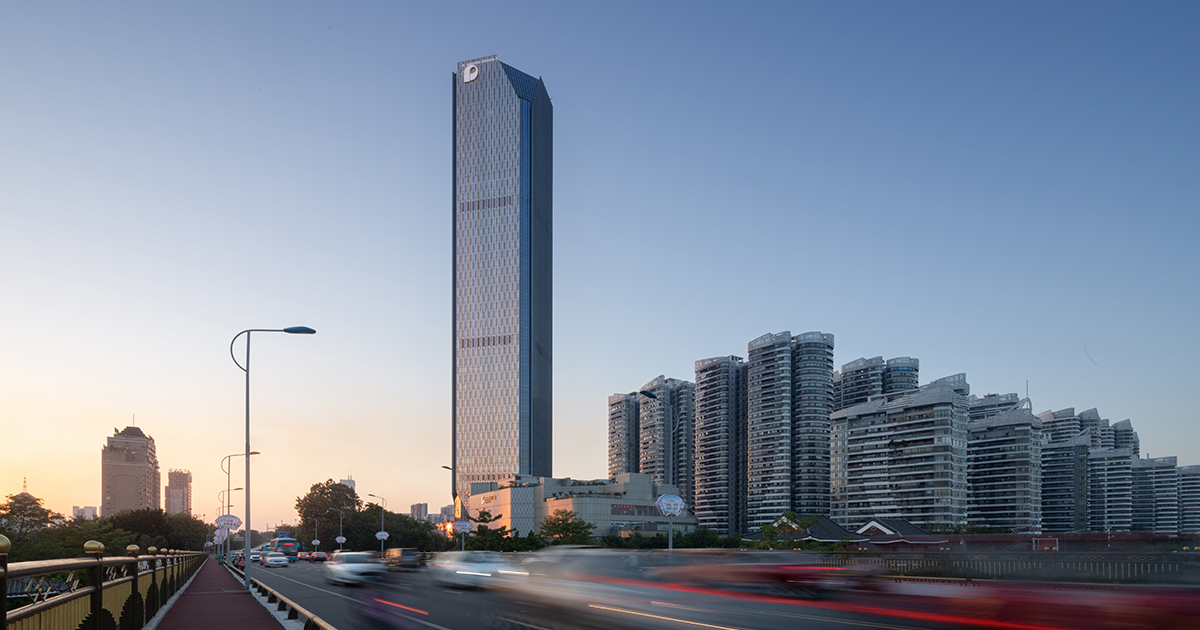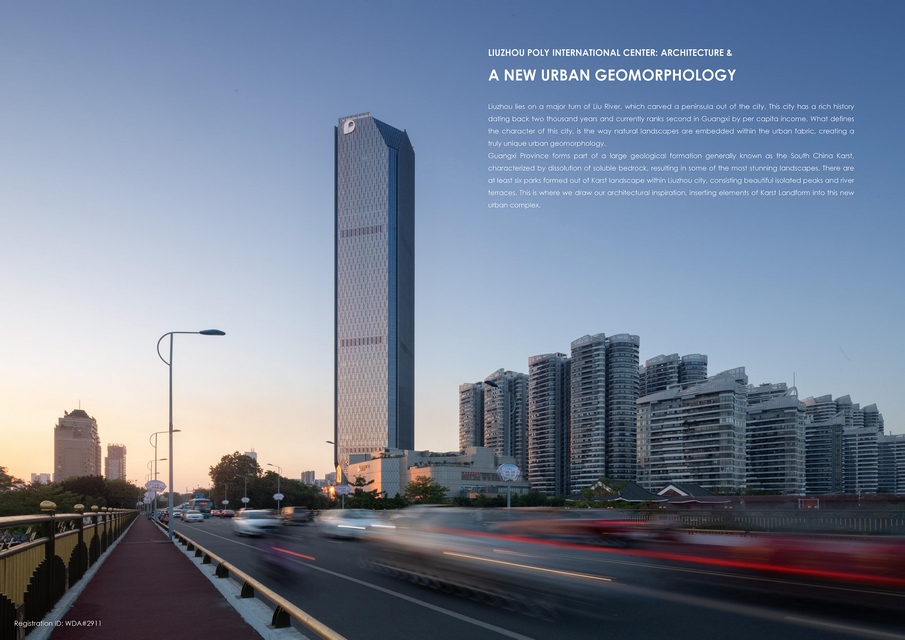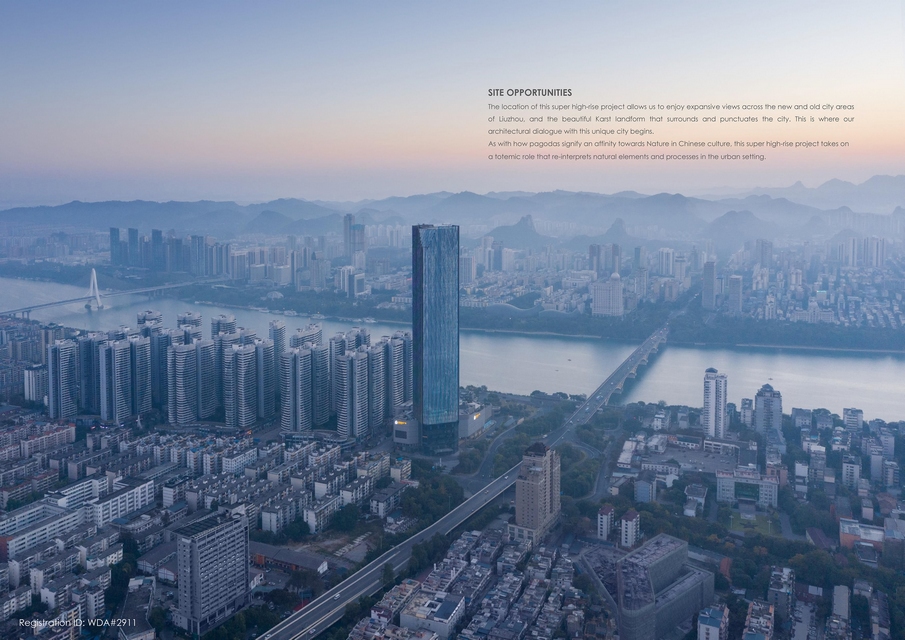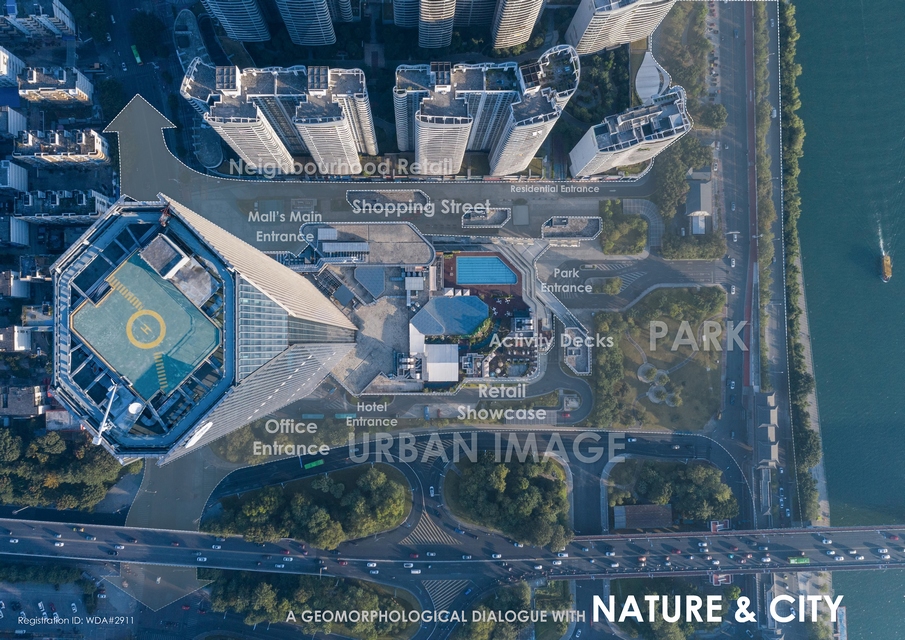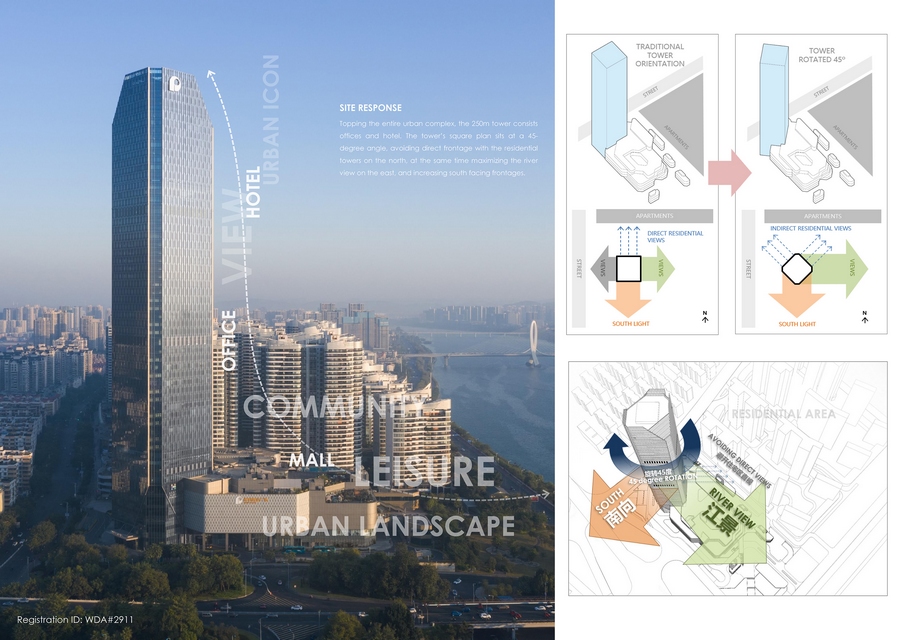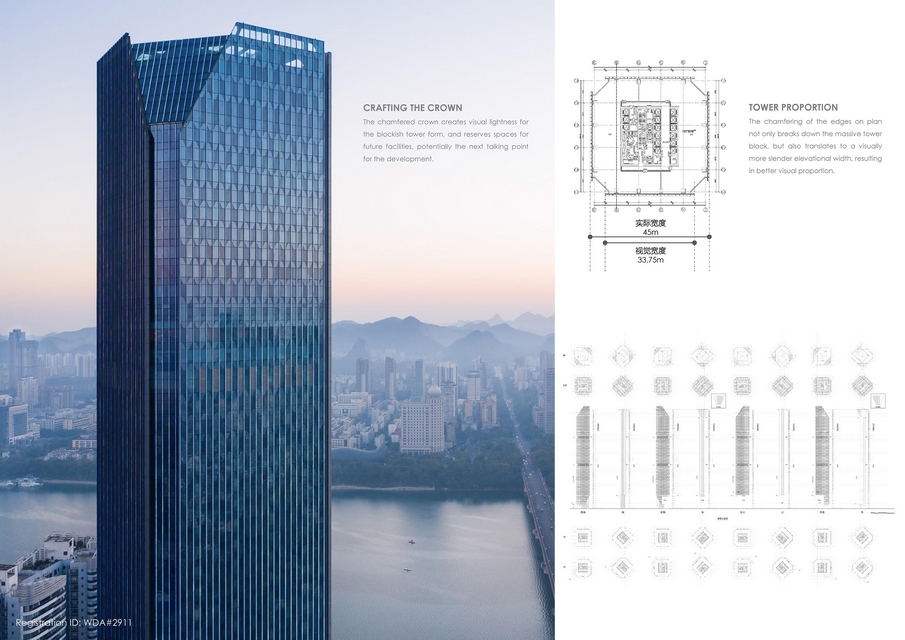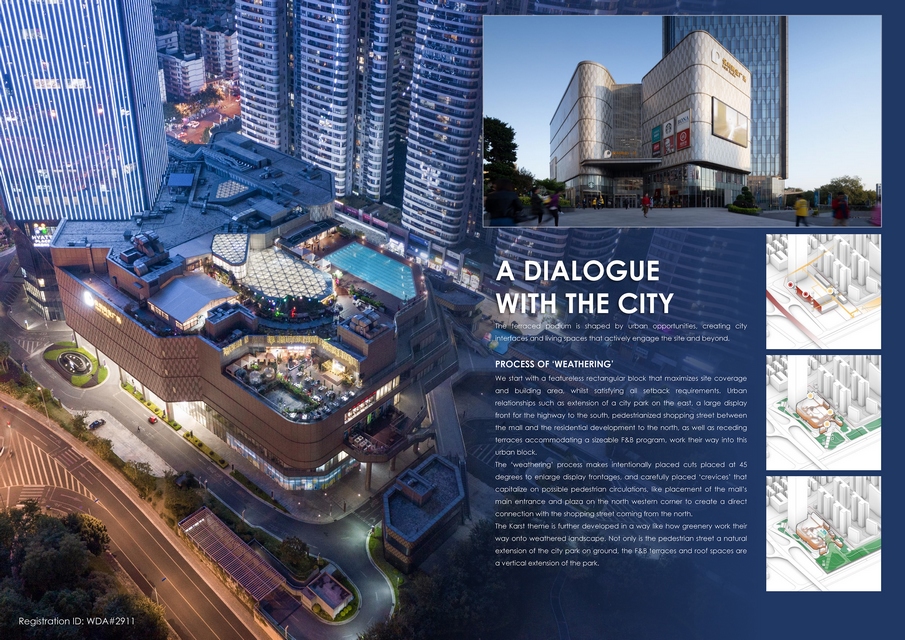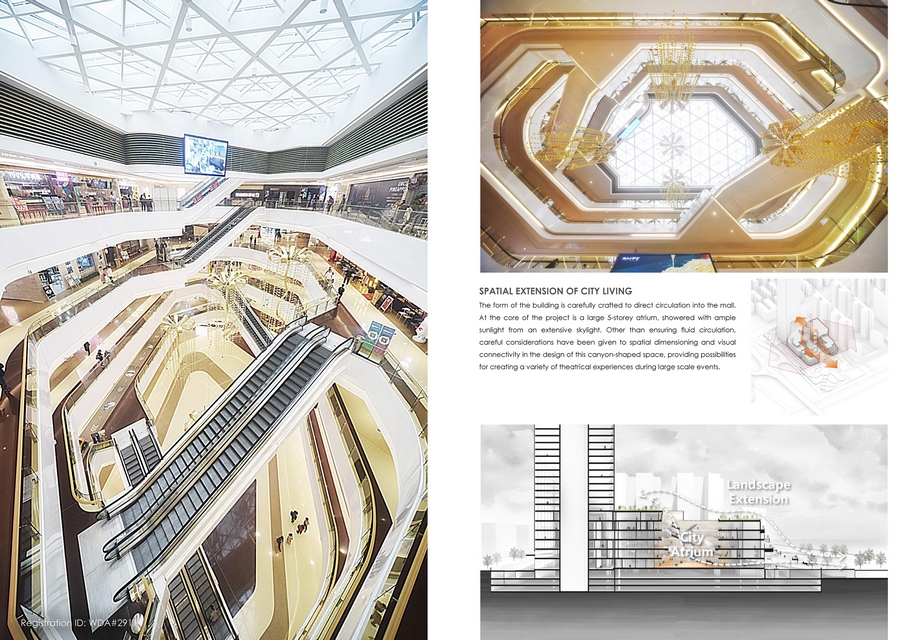Liuzhou Poly International Center | DP Architects | World Design Awards 2021
DP Architects: Winner of World Design Awards 2021. Liuzhou lies on a major turn of Liu River, which carved a peninsula out of the city. Currently ranked second in Guangxi by per capita income, its economic vitality in juxtaposition to its rich 2,000-year history, is characterised in the way its natural landscapes are embedded within the urban fabric; creating a truly unique urban geomorphology.
Guangxi Province forms part of a large geological formation generally known as the South China Karst, characterised by dissolution of soluble bedrock, resulting in some of the most stunning landscapes. There are at least six parks formed out of Karst landscape within the city, consisting beautiful isolated peaks and river terraces. This is where we drew our architectural inspiration, inserting elements of Karst Landform into this new urban complex.
SITE OPPORTUNITIES, A DIALOGUE WITH NATURE
The location of this super high-rise project allows us to enjoy expansive views across the new and old city areas of Liuzhou, and the beautiful Karst landform that surrounds and punctuates the city. Here, is where our architectural dialogue with this unique city begins. As with how pagodas signify a cultural affinity towards Nature, this super high-rise project takes on a totemic role; re-interpreting the natural elements and processes within its urban setting.
CRAFTING THE TOWER
Topping the entire urban complex, the 250m tower consists of offices and hotel. The square plan of the tower sits at a 45-degree angle, avoiding direct frontage with the residential towers on the north while maximising the river view on the east and increasing south-facing frontages.
On plan, the chamfering of the edges not only breaks down the massive tower block, but also visually translates to a more slender elevational width, resulting in better visual proportion. The tower is further chamfered at the crown, to create visual lightness for the blockish form, and crafts out an interesting functional space at the top of the tower that is reserved for future extension of hospitality or office functions.
DANCING IN LIGHT
The elevational pattern is composed of two leaf-like shapes that extend the concept of form-crafting. The repetitive alternating of the shapes is akin to a natural upward growth. Similar to sunlight reflecting off Liu River, the use of two glass types in the design creates a shimmering effect under the movement of the sun.
The resulting façade interacts with changing natural light throughout the day. From a quiet texture to a shimmering surface, its ever-changing expression is also a vertical extension of the Liu River.
PROCESS OF ‘WEATHERING’: A DIALOGUE WITH THE CITY
The terraced podium is shaped by urban opportunities, creating city interfaces and living spaces that actively engage the site and beyond. We began with a featureless rectangular block that maximises site coverage and building area, whilst satisfying all setback requirements. Urban relationships such as extension of a city park on the east, a large display front for the highway to the south, pedestrianised shopping street between the mall and the residential development to the north, as well as receding terraces accommodating a sizeable F&B program, work their way into this urban block.
The ‘weathering’ process makes intentionally placed cuts at 45 degrees to enlarge display frontages and carefully placed ‘crevices’ to capitalise on possible pedestrian circulations, like placement of the mall’s main entrance and plaza on the north-western corner to create a direct connection with the shopping street coming from the north. The Karst theme is further developed through the incorporation of greenery into the weathered landscape; effectively allowing the pedestrian street to become a natural extension of the city park on ground, and the F&B terraces and roof spaces to function as a vertical extension of the park.
SPATIAL EXTENSION OF CITY LIVING
The form of the building is carefully crafted to direct circulation into the mall. At the core of the project is a large 5-storey atrium, showered with ample sunlight from an extensive skylight. In the design of this canyon-shaped space, careful considerations were given to its spatial dimension and visual connectivity so as to provide possibilities for creating a variety of theatrical experiences during large scale events.
Through sensitive architectural design, Liuzhou Poly International Center is a good example of how urban developments can in many ways reflect Nature. The resulting iconic forms and interesting spatial experiences not only draw inspirations from Nature, but also rekindles our natural affinity for multi-layered urban living.
Project Details
Firm
DP Architects
Project Name
Liuzhou Poly International Center
Architect/Designer
DP Architects
World Design Awards Category
Mixed-Use Built
Project Location
Liuzhou, Guangxi
Team
Chan Sui Him, Teoh Hai Pin, Lesley Lim, Niew Pey Ran, Goh Yong Qin, Chen Bin, Rex Tu, Liu Xiaoying, Liu Chen
Country
People’s Republic of China
Photography ©Credit
©schranimage, Guangxi Poly Real Estate Co., Ltd, DP Architects
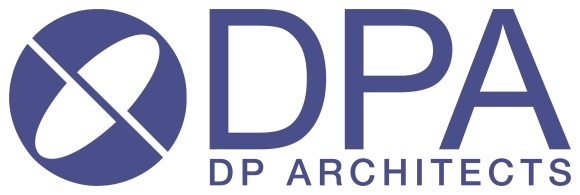
DP Architects
DP Architects is a leading multidisciplinary design practice in Asia with staff in 16 global offices strategically-linked from Shanghai to London, and 8 specialist companies providing a range of services from architecture and urban planning to engineering, sustainable design, interior, façade and landscape design. Founded in 1967, having built a deep portfolio of works spanning across 77 countries, the group of companies functions as One Global Studio, harnessing the collective experience and knowledge of its people, resources and data to deliver fully-coordinated, innovative and well-calibrated design solutions at all scales, contributing to a city’s long-term sustainability and socio-economic health.


